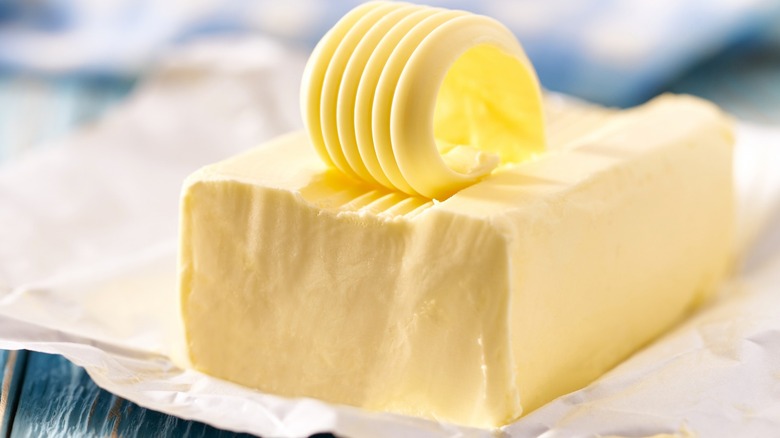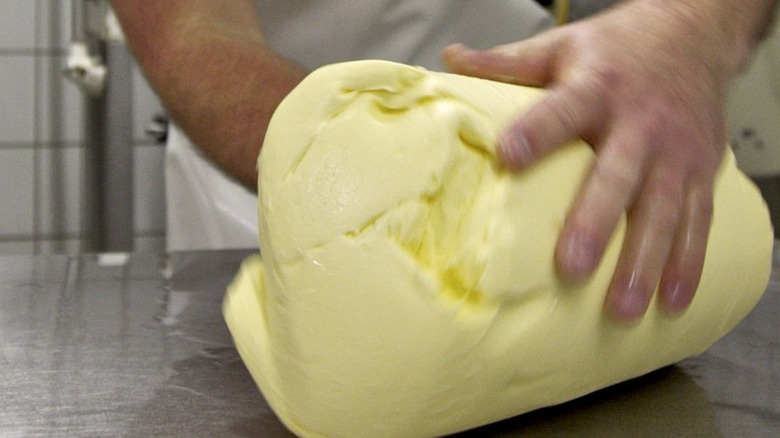Is There A Difference Between Hand-Rolled And Stick Butter?
Butter is as fundamental to cooking as wheels are to driving a car. Whether you're spreading it on toast, beating it into cookies, or pan frying meat or fish in it, butter is a fundamental building block of many dishes, according to MasterClass. Though it's available in plant-based forms, the real stuff comes from churning cream produced by cows until it transforms into a combination of butter and buttermilk. In its natural state, butter has a yellowish hue, but some companies add dye to enhance the color.
Butter consumption in the United States rose by 24% in the decade from 2010 to 2020, the International Dairy Foods Association reported. That's because customers became educated about the trans fats in margarine and shifted toward more natural food items, per NPR. After all, you'll find some health benefits in butter.
Butter exists in many forms, from whipped to flavored varieties. Store shelves are often well-stocked with many options that include stick butter and butter that's been hand-rolled. But these choices aren't as different as you might suspect.
Hand-rolled butter doesn't have measurement markers
If you're plucking your butter off the store shelf without any foresight of how you'll be using it, you could be making a mistake. For example, if you bake every day, you probably don't want to fill your refrigerator with hand-rolled butter. This kind of butter comes in a log, and it's wrapped in parchment, according to Taste of Home. Usually these logs weigh about 1 pound, and they do not come with measurements indicated on the wrapping.
Butter that comes in stick form, on the other hand, is wrapped into rectangular sticks by a machine. The sticks are uniform, and they're wrapped in paper that provides precise measurements. This is the best butter for baking because you can be more precise than you could measure out hand-rolled butter. If you do opt to bake with hand-rolled butter, experts recommend using a kitchen scale. One stick of butter equals 100 grams, 3.5 ounces, and ½ cup, per The Pioneer Woman.

